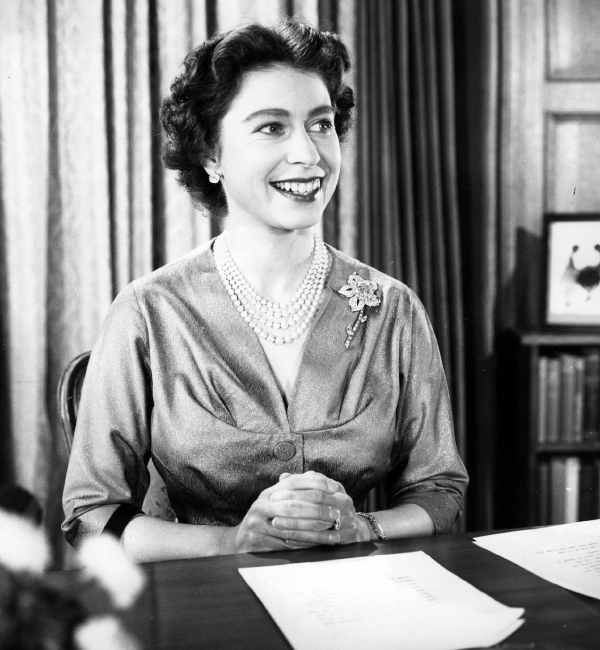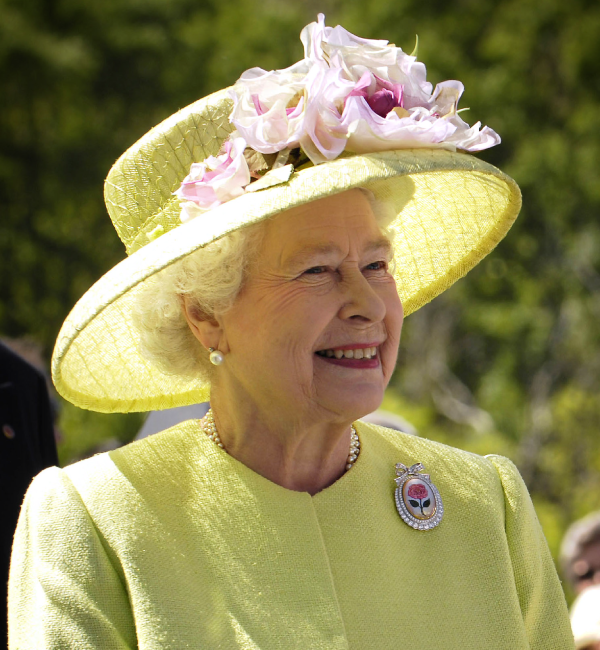Queen Elizabeth II was monarch of the United Kingdom and the Commonwealth, of which Canada is a part. She was also Supreme Governor of the Church of England. Her reign, which lasted 70 years (1952-2022), was the longest in modern times. She governed with some fifteen prime ministers. She is the queen who traveled the most during her reign.
Although her role was rather symbolic, she nonetheless embodied her country's unity and stability throughout the world. She enabled several countries to become independent or to amend their constitutions. Above all, she acted as advisor to the British Prime Minister. Her reign, marked by progress and modernization, is considered a new Elizabethan era.

Queen Elizabeth II visits Canada, October 1957
Source : Queen Elizabeth II during her visit to deliver the Speech from the Throne in the Senate Chamber. Ottawa, Ontario. October 14, 1957 [Photographie], Canadian Heritage - Patrimoine canadien, 2011, Flickr, (URL). Droits réservés*[1]

Queen Elizabeth II visits the United States, May 2007.
Source : NASA/Bill Ingalls, Wikimedia Commons
-
1926: Élisabeth Alexandra Marie is born in London on April 21.
-
1945: Towards the end of the Second World War, Elisabeth joins the Auxiliary Territorial Service. After training, she is promoted to lieutenant-colonel.
-
1947: Her Royal Highness Princess Elisabeth marries Philip Mountbatten, Prince of Greece and Denmark, on November 20. They have four children: Charles, Anne, Andrew and Edward.
-
1952: King George VI dies on February 6. Elizabeth, who is traveling in Kenya, is named Queen.
-
1953: Elizabeth officially becomes Queen on June 2. For the first time in history, the coronation of a British monarch is broadcast on television.
-
1981: The Queen is the victim of an assassination attempt during an official ceremony. Although the gunman used blank bullets, Elizabeth II's calm and control are remarkable.
-
1982: Canada repatriates its constitution. The Queen abolishes the need for Canada to consult the British Parliament when amending its constitution. However, the monarchy is maintained.
-
1992: Due to the many tragedies that occur in this year, the Queen calls 1992 an annus horribilis (“horrible year”). During the year, three of her children were divorced, demonstrators in Dresden threw eggs at her, Windsor Castle was set on fire, the Prime Minister introduced a law requiring her to pay taxes and, finally, she sued The Sun newspaper for copyright infringement.
-
1997: Princess Diana, ex-wife of Prince Charles, dies in a car accident. The Queen is slow to react to this important death, provoking discontent and even anger among the British people.
-
2012: The British Antarctic Territory is named Queen Elizabeth Land.
-
2012: The Queen celebrates her 60th anniversary of reign, known as the Diamond Jubilee.
-
2022 : The Queen celebrates her 70th anniversary of reign, known as the Platinum Jubilee.
-
2022 : The Queen dies on September 8, aged 96.
Canadian Heritage - Patrimoine canadien. (2011). Queen Elizabeth II during her visit to deliver the Speech from the Throne in the Senate Chamber. Ottawa, Ontario. October 14, 1957 [Photograph]. (URL). *Extract used by Alloprof in accordance with the Fair Dealing in Education Copyright Act [https://laws-lois.justice.gc.ca/fra/lois/c-42/page-9.html].